Overview
Once the seat of local royalty between 1713 and 1946,
Champasak has lost much of its former glory and prestige. Due to the high number of nearby attractions and the famous Wat Phu Champasak, the otherwise unremarkable town has an excellent ion of options for accommodation, and for many is a more appealing base of operations for visiting the nearby World Heritage Area than hectic Pakse. Of course, aforementioned Wat Phu Champasak is the clear standout experience here, but Kiet Ngong, home of the working elephant and the Se Pian National Park Area are also memorable experiences.
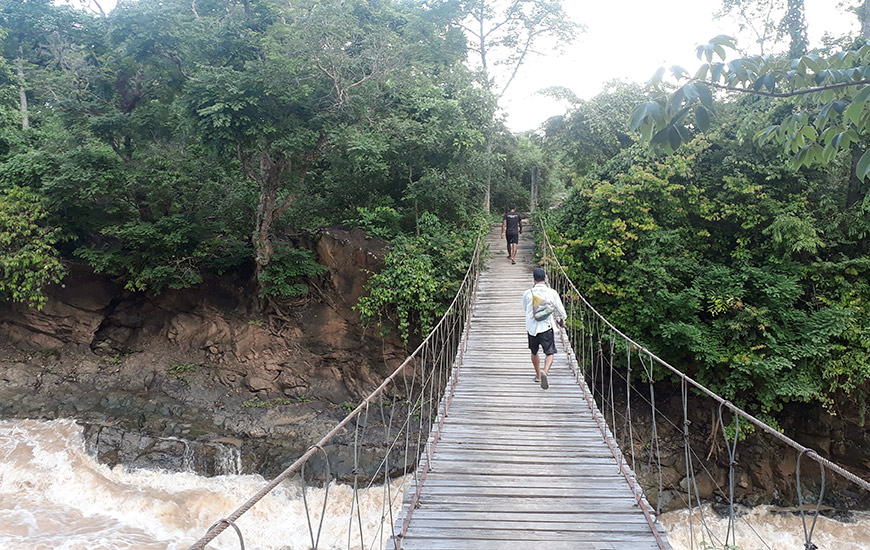
Crossing the Mighty Mekong.
See and Do
Occupying a pleasant riverside location by the Mekong,
Wat Muang Kang is the oldest active temple in Champasak, and probably the most visually impressive one in all of Southern Laos. The chapel hall, inspired by Cambodian and Thai architecture, is stunning, but pales in comparison to the temple’s library. Designed as a blend between French, Vietnamese, Burmese and Lao architecture, it’s majestically ringed by a series of pillars, and topped by an unusual three tiered roof. It is said that a mystic light shines from across the river at night, reflecting off one of the temple’s towers to illuminate the holy mountain above Wat Phu Champasak.
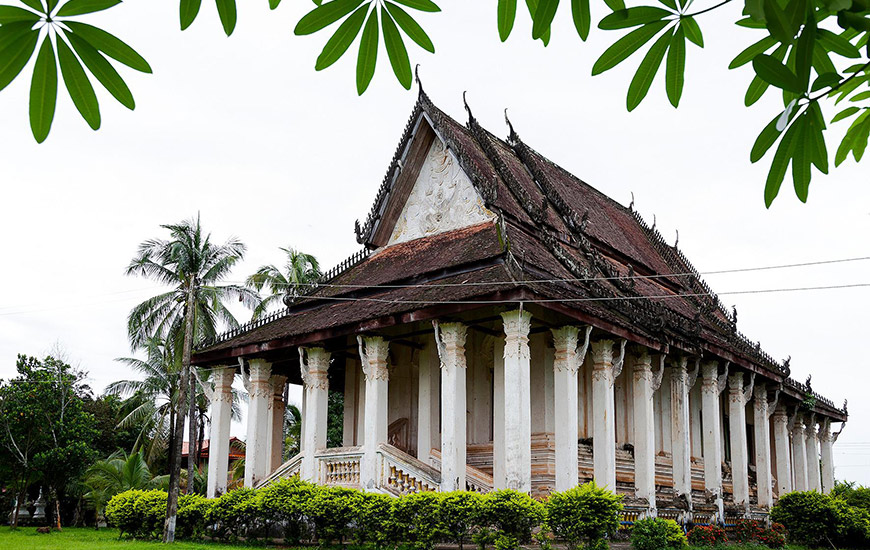
Wat Muang Kang houses an impressive library.
If you have been travelling south along the Mekong,
Don Daeng will probably feel familiar to you. Very much a stereotypical Mekong island, traffic is non-existent, and quiet beaches are easy to find. There is also a forest temple at the centre of the island, featuring an ancient brick stupa presumed to be related to nearby Wat Phu Champasak.
Without a doubt the main attraction in the province, the
Wat Phu World Heritage Area is a major highlight for any traveller in Laos. While dwarfed by the gargantuan Angkor complex in Siem Reap, Wat Phu Champasak is surrounded by a far more visually stunning natural back, and feels decidedly mystical, bordering on spiritual. Indeed, it’s easy to see why the people of the region have worshipped here on the slopes of the holy mountain for millennia, and why UNESCO decided to designate it as a World Heritage Site in 2001.
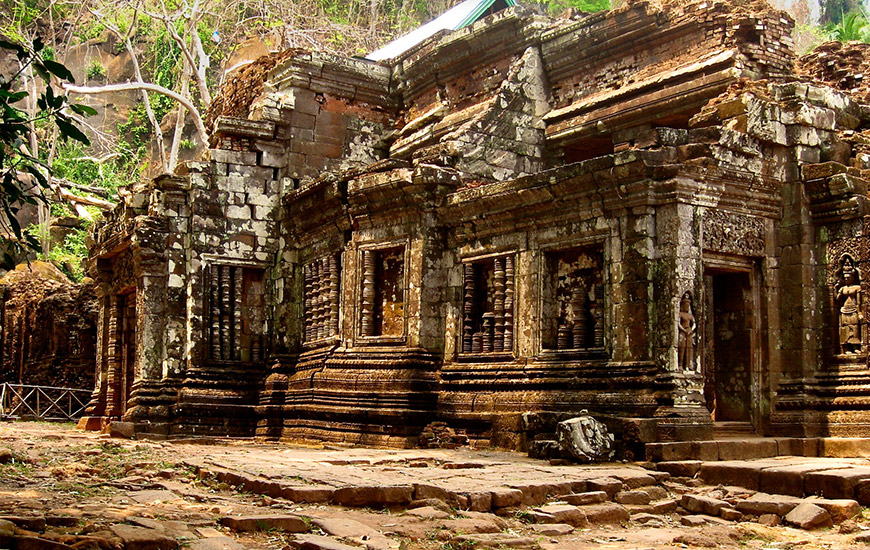
Wat Phu Champasak is considered the equal of Angkor Wat by many.
The complex is divided into six terraces on three levels, with the topmost level containing the shrine itself. While it had been in use as a religious site for centuries prior, the buildings that we can see today were mostly built in the 1000’s AD by the Khmer Empire, making some of the buildings over a thousand years old.
As you enter the site, you’ll be greeted by the
Wat Phu Exhibition Hall displaying stone work from Wat Phu as well as nearby temples and ruins. Moving on you’ll pass over a walkway flanked by “barays” or small ceremonial ponds that are replete with lotus flowers during the wet season.
Once you’ve ascended the stairs to the second level you’ll have to cross an open courtyard before getting to two
sandstone pavilions flanking a series of
galleries leading to the next set of stairs. Within the galleries there are displays of
Hindu sculptures, depicting figures like Vishnu and Shiva. There is also
Nandi Hall, behind the left platform, which once served as the ceremonial end of the ancient royal road stretching from Angkor Wat to here. Before proceeding to the final level, you may see some Thai and Lao people presenting offerings to the dvarapala (sentinel) statue guarding the ascent, so that they may have his blessing to visit the shrine on top. Two similar statues lay half buried not far away, with one of them enjoying the distinction of being the largest surviving dvarapala in any Angkorian ruin.
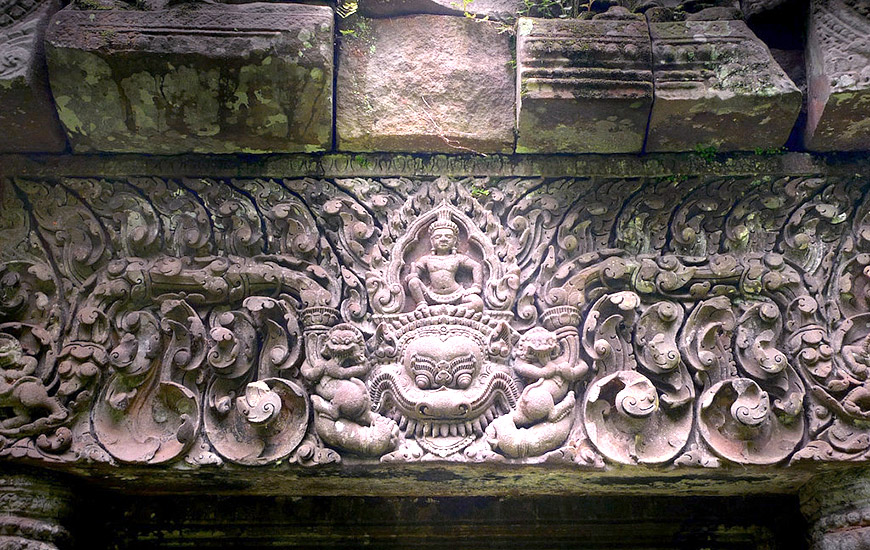
The Shiva Lingam was once bathed by water from a sacred spring.
The third and final level contains the centrepiece of the ruins,
Wat Phu itself. Housing a myriad of carvings, both Hindu and Buddhist, the shrine is fronted by a
Shiva lingam that once upon a time would be bathed by water flowing from the
sacred spring behind the structure, carried through sandstone pipes. Behind and around the building, you can find a
Buddha footprint carved into the side of the mountain, as well as the famous
Elephant and Crocodile stones. This is also a fantastic place to sit down for a rest and enjoy a magnificent view of the complex in its entirety.
Despite being on the other side of the Mekong River,
Uo Moung is presumed to be part of the same temple complex and Wat Phu, though its purpose has been lost to time. Since most of the carvings and stone work from here was moved to the Wat Phu exhibition centre, there isn’t all that much to look at, and is perhaps best suited for the temple/ruin enthusiast. Nevertheless, the overgrown nature of the temple, with lush trees and green moss everywhere you look, gives you the feeling that you’ve stepped into an Indiana Jones movie, delving into forgotten ruins.
The village of
Kiet Ngong, now a thriving ecotourism project, is the obvious base for treks and hikes into Se Pian National Park Area. Within the town, you will see plenty of working elephants, as well as a herd of buffalo, giving it a peculiar atmosphere. The main reason travellers visit here are the
canoe trips through the swamp (available from July through March) as well as
elephant riding.
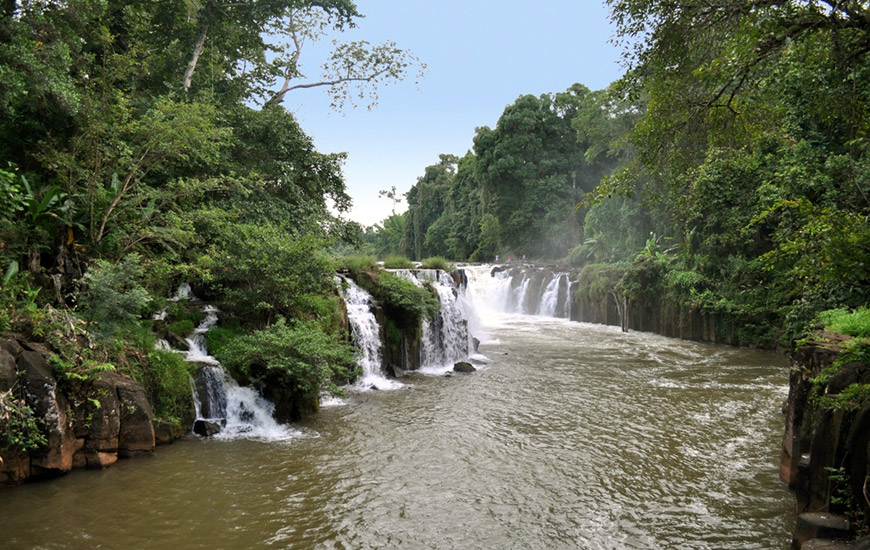
Se Pian NPA is gorgeous.
Should you be on the hunt for souvenirs, or perhaps just wanting to interact more with the ethnic minorities of Laos, a visit to
Ban Nong Beung, a nearby Tahoy village, should not be skipped. Famous for its woodcarving, here they craft and sell both modern products, and cultural items like masks, carefully burned to blacken the wood.
The aforementioned
Se Pian NPA is an extremely vital protected area, being home to numerous endangered species, like Asiatic black bears, gibbons and Siamese crocodiles, not to mention dozens of distinct bird species. Unfortunately for the independent minded explorer, there is currently no way to visit the park on your own, but both long multi-day treks or shorter day trips can be arranged in either Kiet Ngong or Pakse. For a more off-the-beaten-track and exciting entrance to Se Pian, you can travel to
Attapeu in the east and let one of the park’s three rivers carry you deep into the jungle.
Culture & Arts
A unique cultural experience awaits you in Champasak in the form of
Shadow Puppet Theatre & Cinema Tuktuk. Here they have revived the ancient art of Shadow Puppetry, and use it to retell the famous Indian Epic, Ramayana. Additionally, every Wednesday and Saturday evening, set to a score performed by live musicians, a screening of Academy award nominated silent film Chang (1927) is held.
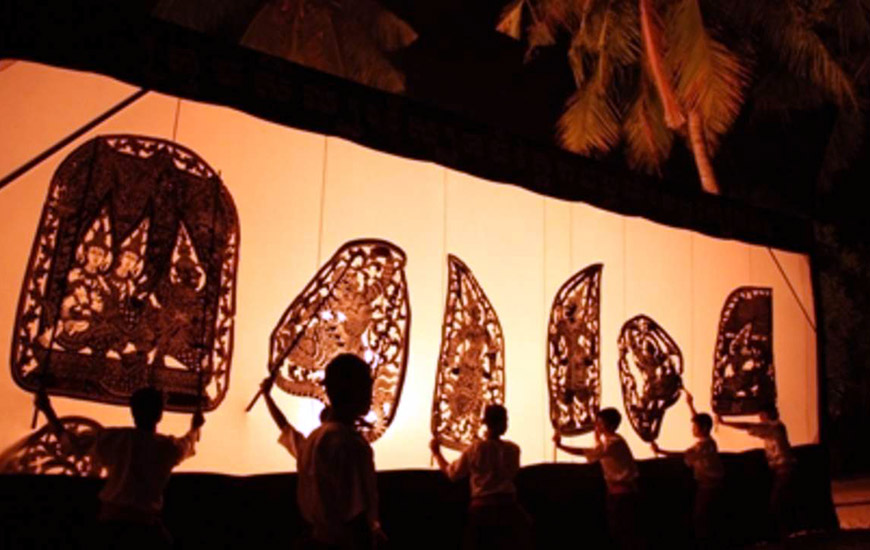
Shadow puppetry is a unique and traditional Lao art form.
Another way to get a more intimate look at the local culture is to opt for
homestay accommodation while visiting Kiet Ngong. The village has actually set up a common system where the 20-odd homestays in town take turns accommodating up to 2 guests at a time. Living up close to a rural Laotian family like this lets you observe local life and traditions, and if it’s harvest or planting season, you can even join in for a quick session of farm work, which is a pillar of rural Laotian living.
Food and Drink
Champasak doesn’t have a lot to offer in terms of dishes not found elsewhere in Laos, but the charming guesthouse restaurants are great places to enjoy standard Lao favourites like Larb or Laotian barbeque in an authentic atmosphere.
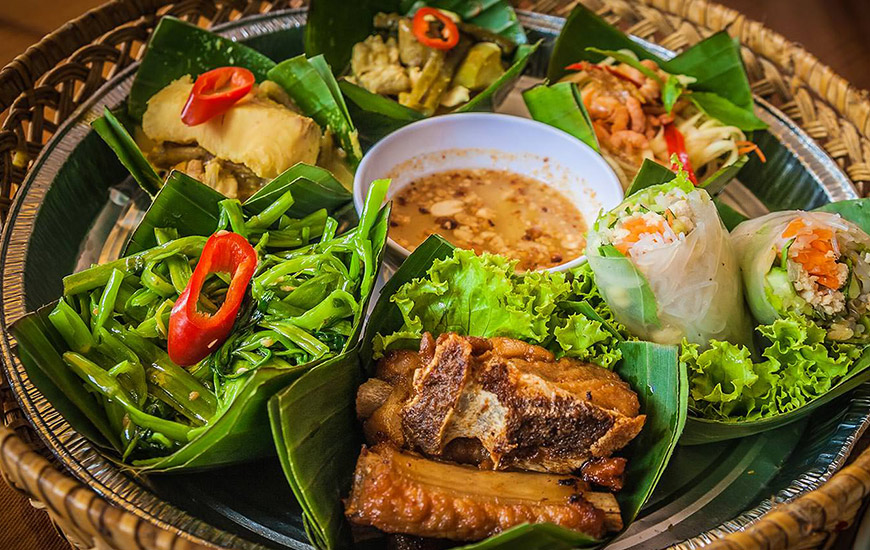
Traditional Lao food.
Festivals and Events
Bun Wat Phu Champasak, the biggest and most unique festival in the province is, as the name suggests, held at Wat Phu Champasak. The celebrations take place over three days during the full moon of third lunar month, which usually falls in February on the Gregorian calendar.
Most of the events are various Buddhist ceremonies, climaxing with a parade of monks receiving alms early on the last day, followed by a candlelit circumambulation of the shrines on the lower level once the sun has set.

Bun Wat Phu Champasak brings pilgrims from all over the world.
The atmosphere is lively, and a wide variety of events can be enjoyed, from kick boxing to live comedy, music and dance. Once darkness falls, alcohol is consumed in abundant quantities, and the evenings have been known to get somewhat rowdy at times.